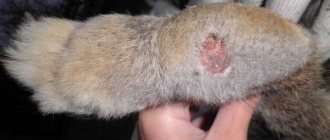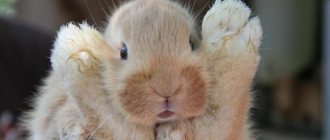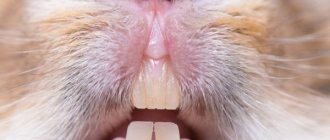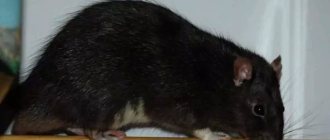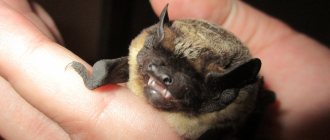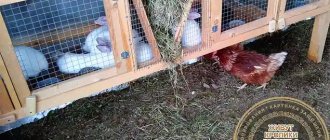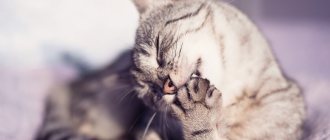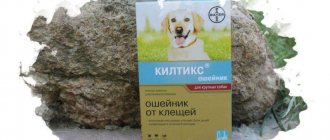Nowadays, pets are an integral part of our lives. As a child, everyone dreamed of having a pet that they could take care of and play with. Every person needs a pet to whom they can give all their love and care. Previously, people kept cats and, less frequently, dogs as pets.
Today, there are a huge number of other animals that anyone can have at home. Some people prefer dogs and cats, while others prefer more exotic pets. Such as snakes, lizards and even spiders. Some people prefer rodents - mice, rats, chinchillas, hamsters, guinea pigs and rabbits.
Since, often having a rabbit at home, people do not know how to properly care for rabbits, what to feed and what features they need to remember. Let's figure out whether it is even possible to keep rabbits at home.
Is it worth having a rabbit in an apartment, pros or cons?
It is not human nature to listen to other people's opinions. How much did you listen to your mother, and then say, Mom, you were right, and even more so the opinion of Internet advisers on choosing animals. Meanwhile, rabbits are exotic animals for apartment keeping, and exotic animals require special knowledge. Therefore, read our advice, and then decide for yourself whether you are ready to take responsibility for a small living creature.
So, the topic of today’s review is decorative rabbits: pros and cons. How difficult is it to care for a small pet, how to feed it and what should you be wary of? Read about all this right now.
Decorative and productive rabbits
Rabbits can be wild or domestic. Read all about wild rabbits. Domestic rabbits are divided into two types of economic use.
- Productive breeds are grown exclusively for meat, skins, and fluff.
- Decorative breeds and their varieties are dwarf and are raised only as pets.
In 1912, zoologists divided rabbits into two orders - rodents proper and lagomorphs. Since that time, rabbits, hares and pikas began to be classified as rodents (lagomorphs). So don't call rabbits rodents.
Read more: Why rabbits are not rodents
Satin dwarf
An American breed of rabbits with a special guard hair structure. It has a hollow shaft that reflects light well and gives the wool a unique shine. The first mutation occurred in 1934, after which these animals began to be purposefully bred.
Characteristic:
- Weight: 1500-2200 g.
- Ear length: 6-9 cm, straight.
- Wool: medium.
- Color: white, black, chocolate, red, chinchilla, Siamese, otter, opal.
- Price: 2-9 t.r.
A dwarf variety of satin rabbits was obtained not so long ago. Their body is slightly elongated, their back is rounded. The peculiarity of satin rabbits is their shining and iridescent fur, thanks to which it is impossible to confuse these animals with other breeds.
When you can’t get a decorative rabbit, pros and cons
It is strictly forbidden to purchase rabbits.
Don't get a rabbit as your first pet. Do not get a rabbit to play mother-daughter games for girls 10-12 years old. Don't let your first experience of future motherhood end with the death of your pet. The risk of death is very high. It's better to adopt a kitten from a shelter. This will be the best example of kindness for the expectant mother. Cats, physiologically, are much closer to people. They have the same type of digestion, they are smarter, communicate easier with people, and are more adequate.
Teach children responsibility and kindness, and not to fulfill the child’s every whim. Read the great Ukrainian and Russian teacher V.A. Sukhomlinsky.
Start at your discretion, but remember the characteristics of long-eared animals at home.
- Do not have pets under the influence of momentary sympathies.
- If you don’t know, the second most frequently asked question from lovers of decorative rabbits is the question in the search engine: why do rabbits smell? I’ll get ahead of myself and say that the smells are overfeeding the pet with treats.
- Not many people know that eating feces in rabbits is a physiological feature that cannot be weaned off. In all lagomorphs (lagomorphs), cecotrophy is a physiological feature of digestion. The rabbit is not a rodent; it belongs to an order parallel to rodents.
- For young families, an exception: if one of the members has been the owner of the animal for a long time. Build your relationship first.
- If you plan to have a little one. Definitely, the animal will interfere and distract the young mother from new and difficult responsibilities; do not torment the mother and the animal.
- One of the family members is against pets. Avoid unnecessary scandals with loved ones and family.
- Like a thoughtless purchase, at the child’s first request. Parents will take care, and the child, instead of kindness, will learn to shift his worries onto the shoulders of others. Or immediately take on this burden and explain to the child that this is not his whim, but the decision of the family council.
- The area of the home is so small that there is nowhere to turn around. Sometimes our housing is so small that its area resembles an enclosure for a large dog.
- Rented housing is also not an option. Rental conditions may change; constant moving does not contribute to normal conditions for the pet.
There are other options, they can be listed for a long time, based on the characteristics of each family, and determine for yourself the pros or cons of a decorative rabbit in the house. But if you are determined to get a rabbit, then read on, perhaps you will only become stronger in your desire to care for a cute bunny.
Breeding
The issue of breeding rabbits is relevant only for exotic breeds
The issue of breeding decorative rabbits is relevant, as a rule, only for owners of rare, elite breeds and those who sell them.
How to determine gender and when puberty begins
Sex differences in rabbits become more obvious with age
Determining the sex of a pet is the first thing an inexperienced breeder will have to deal with. Here are some simple tips.
- The smaller the rabbit, the more difficult it is to determine its gender. Sexual characteristics become more obvious by 2 months of age;
- Boys are usually smaller in size than girls of the same age;
- The head of a male decorative rabbit is short and square in shape, while that of a female is elongated and narrow;
- Differences in genital organs.
To examine the genitals, the animal turns over onto its back. Carefully, moving away from you, spread your hind legs to the sides. The tail is pulled behind the back. Use the pad of your finger to apply light pressure to the area near the base of the tail. The female will have a visible genital slit. The male has a round opening, more distant from the anus than the female. Also, an older male will have noticeable testicles - pink, elongated swellings. If you press on the abdomen in the area of the genitals, a pink or white organ will become noticeable - the final proof that this is a boy.
Puberty in rabbits occurs at 7-8 months of age, but sexual play begins much earlier - at 4 months. During this time, experienced breeders advise giving the animal a toy of a suitable size “for training.”
The following changes in behavior indicate that they are ready to reproduce:
- "marks" of the territory;
- increased aggressiveness;
- excessive activity;
- digging;
- desire to “build” a nest, raking litter;
- scattering of feed and feces.
Mating
Rabbits get pregnant very easily
For mating, the female is placed next to the male. If you do the opposite, the gentleman, instead of engaging with the lady, will begin to study the new cage and the environment around him, ignoring his direct responsibilities.
After the first mating, the female is not immediately taken away “from the guests”, but is given another hour or two for repeated matings. A day later, the lady again goes to the gentleman.
If the female rabbit is not ready to mate, she will run away from the male and not give in, angrily thumping her hind legs.
Pregnancy
There are 3 ways to determine whether a rabbit is pregnant or not.
Method number 1 - Attempt to re-pair.
Pregnancy of a female is determined by her indifferent attitude towards the male. When trying to mate, she will resist, will chase the gentleman and growl at him if she is already pregnant.
But this sign does not always work. There are female rabbits who are happy to mate while being 100% pregnant.
Method number 2 - Palpation of the abdomen
Feeling the belly of a potential mother - the rabbits feel like small balls.
This is done extremely carefully. And if there is no experience, so as not to harm future offspring, it is better to entrust palpation to a specialist.
Method number 3 - Observation of behavior
A pregnant rabbit has an increased appetite. This symptom becomes especially obvious in the last weeks of pregnancy.
But this sign also fails. There are female rabbits who do not show an increase in appetite and even begin to throw food out of the feeder.
Pregnancy lasts about a month. During this period, it is important to provide the expectant mother with high-quality and balanced nutrition with a high calcium content. Rest is also necessary for a pregnant rabbit. Her cage should be located in a quiet place, away from the male's cage.
A week before the expected birth, the rabbit should not be allowed to go for a walk. The cage should be equipped with a house, if there was none before, and the cage itself should be disinfected.
The mother's behavior will signal the approaching birth. She will begin to make a nest - putting hay in her mouth, plucking the fluff on her chest.
If everything goes well, the mother rabbit will give the world 2 to 5 decorative rabbits.
The degree of fatness of newborn rabbits determines their health. The baby's tummy should be tight, without folds.
How to care for newborn rabbits
This is how helpless newborn rabbits look
The ideal option is natural, conceived by nature, when the mother herself feeds her offspring. But there are unforeseen circumstances in the form of the death of a rabbit during childbirth or the maternal instinct not manifesting itself. In this case, artificial milk for kittens or puppies can replace mother's milk. It is considered the closest in composition to rabbit.
Cow's milk, even skim milk, is completely unsuitable for feeding newborn rabbits. It is too poor in composition and nutritional value for this.
Milk is given to babies using a pipette pulled onto a syringe without a needle.
If the mother’s milk supply is fine, then the offspring are not taken away from her until 1.5 months of age.
An animal is not a child's toy
This is the first thing to realize. Despite their miniature size and usually affectionate nature, rabbits will require attention, affection, special food, and special care products.
Dwarves are sometimes very aggressive, even more so than giants
Before you get a rabbit at home (and this must be explained to your children), you need to take care of the mandatory conditions for keeping a dwarf rabbit at home:
- spacious cage;
- the rabbit owner has free time when he needs to take his pet for a walk;
- proper nutrition and veterinary care;
Rabbits do not tolerate moving and travel well. How to transport rabbits and other animals within the country and abroad, find the section veterinary certificate form 1 veterinary Rosselkhoznadzor. It is clear that it is difficult to understand the cavalcade of documents, but find your region in the search at the top of the page of this site. If necessary, contact inspectors in your region by phone. We are obliged to help you. In any case, you will know what requirements need to be met when crossing the border with an animal and more. Perhaps the information from the site will help you make a choice when buying decorative rabbits. Rabbits can be long-haired or short-haired.
Is it worth having a rabbit for children? Pros or cons?
The kids really like cute miniature creatures. However, the child needs to understand that squeezing a “living toy” will have to be done carefully. It is necessary to take into account not only the desires of the child, but also the desires of the rabbit; although he is small, he is a living creature.
The rabbit does not bite often - more often it just hits the offender hard with its hind legs
Photo. Before buying a rabbit, we present the picture like this
- At the slightest change it can become aggressive.
- Baby rabbits should be purchased only from trusted breeders, or at a pet store.
Colored dwarf
The breed was founded by the German breeder Hoffmann. By 1957, he had received a fairly large population of different colors: Marder, black, gray, Siamese, blue, etc. This breed is distributed throughout the world and is the most numerous.
Peculiarities:
- Weight: 1000-1500 g.
- Ears: 5.5 cm, straight.
- Coat type: medium.
- Any colour.
- How much does it cost: 3-7 tr.
The body of a colored dwarf has the shape of a cylinder. The front legs are short, the head is quite large, but short. The coat is shiny, medium length, thick. There should be no dewlap. Any color is allowed.
Can a decorative rabbit be huge?
It is believed that a home decorative pet must be a small animal. This is wrong. Maybe you are looking for a huge decorative rabbit. Then the old breed Flanders rabbit is your choice. The history of breeding this breed is very interesting and full of mysticism. Flandre is the largest rabbit, with an average weight of 12 kg. Flanders are common domestic rabbits in the United States that are bred as pets. In America, a program has been developed to teach children how to care for animals using the example of Flanders. The main breeds of giants, rabbit and ram, including dwarf breeds. The Rex breed group is interesting.
The most popular breeds
There are several dozen breeds of decorative rabbits in the world. All of them were bred by breeders. Many of them have gained great popularity among animal lovers.
Attention! When choosing an animal to keep at home, you need to take into account that long-haired pets are more difficult to care for than short-haired ones.
Colored dwarf
Colored dwarfs are miniature animals whose weight varies within 1 kg. The animal has a cylinder-shaped body, a rounded head, and short ears. The coat is very thick, short and shiny. Caring for decorative rabbits of this breed is not difficult. Colored dwarfs are presented in a wide range of colors. In addition, they have a friendly nature.
Lion head
This decorative rabbit comes from Belgium. Thanks to the thick fur on his head and neck, he looks like a lion. Dwarf lionhead rabbits grow up to 1.5 kg. These are smart, playful animals with a good-natured disposition. Such an animal will become a good friend for children.
Lop-eared ram
Fold sheep are native to France. They have one peculiarity - large hanging ears. Due to the wide forehead, wide-set eyes and dense build, the animal resembles a ram. These pets are easy to care for - their fur, although thick, is not long. Fold sheep can be of a variety of colors - blue, white, gray, yellow.
Find out everything - “About lop-eared sheep rabbits.”
Hermelin
The breed is of Polish origin. Hermelines are miniature animals weighing 1-1.5 kg. Their body is fit, their head is oval, their ears are erect and small, and their eyes are blue. The coat is short but very thick.
Dutch Fold
Representatives of this breed resemble a plush toy. They have chubby cheeks, drooping ears and beautiful short fur. The rabbit weighs no more than 1.5 kg. These are calm animals that are willing to be held, allow themselves to be petted, and love active games.
Angora dwarf
Such a pet needs to be carefully looked after - it is all covered with long and soft hair, even its ears. A luxurious fur coat should be combed every day, otherwise it will become tangled.
Reference. Decorative rabbits grow until they are six months old, after which weight gain stops.
Is it possible to teach a rabbit to pee and poop in the same place?
If the rabbit lives only in a spacious cage, then it is possible to train it, since these animals are very clean and usually choose a secluded place in their home for their excrement. The right tray is that very secluded place. However, remember, when released from the cage, he will most likely pea incessantly and this is also the norm, this is how he “confuses” his tracks from predators.
Are you ready to tolerate a poor animal for 5-7 years? If yes, then let's talk about feeding
What food does a decorative rabbit need?
The rabbit comes to the feeder very often during the day: from 20 to 60 times. No, you can fill the feeder once a day, he just needs to always have a feeder full of food. Rabbits salivate constantly, and not like other animals, before and during meals. In addition, his front teeth - incisors - are constantly growing, he needs to grind them down, or rather, he grinds them down himself when he gnaws on hard twigs. Otherwise, a disease called malocclusion develops.
The rabbit is a granivorous animal, and not a ruminant like a cow. The cow has four stomachs and can digest low-nutrient grass. A rabbit, like a cat and a dog, has only one stomach. However, in the diet of a decorative rabbit, approximately 70% of the food is hay, grass, and twigs. Grain feed in the diet of a decorative rabbit is no more than 30%. They purchase grain feed at a pet store or make their own mixtures of grains. Grain is better absorbed in crushed form; coarse grinding is required; grain ground into flour is not allowed to be given to rabbits.
Cecotrophy is a way to assimilate grass and grain as completely as possible, an analogue of ruminant rumination
Photo. But what can happen if you don’t give a decorative rabbit, for example, twig food?
Features of behavior
Domestic rabbits communicate with their owners using body language. By carefully observing your pet, you can guess what he wants to say:
- If the animal is completely relaxed, it should not be disturbed. Especially when he's lying on his side and looks like he's dead. In this position he feels most comfortable. Perhaps he felt so comfortable and good that he fell asleep.
- Licking the owner's hands is a sign of special affection. With this behavior, decorative rabbits demonstrate a friendly attitude. After all, when rodents living together clean and wash each other, they show that they recognize that their relative belongs to their pack.
- The decorative rabbit rose on its hind legs and stretched its neck. This means that he is interested in some subject. The pet wants to take a closer look at it or tries to reach for the treat.
- The animal constantly rummages in the litter, as if looking for or hiding something. Most likely, the rodent is building a hole. Females usually do this during nesting.
- The animal puts its muzzle to the palm and pushes. This is how he shows that he wants to receive another portion of affection and attention.
- The pet presses its ears and shrinks into a ball. This indicates severe fear or wariness. Perhaps he saw a stranger or heard a sharp sound. The feeling of danger is always accompanied by instinctive muscle contraction. The animal also flattens its ears when it is angry and ready to fight. At such moments, he raises his muzzle. It is better not to approach your pet, but wait until he calms down, and then treat him to a carrot or other treat.
- A domestic rabbit bit my hand. Obviously he didn't like the rough treatment. A pet may bite when it is forcibly pulled out of its cage or pressed too hard. This is why children should be taught how to properly handle an animal.
- The animal grinds its teeth or makes a quiet muttering sound. This is how the pet shows that he enjoys stroking.
The habits characteristic of most rodents are described above. However, each animal has its own character, so the behavior of decorative rabbits under different circumstances may differ.
How do rabbits get along with other animals?
The question is controversial whether it is worth starting a zoo at home from different species of animals that are antagonists in nature. If you have even the slightest idea about animal psychology, start one. If you have no idea about competition in the animal world, hierarchy, who to feed first, who to feed later, who needs to be petted, who needs to be reined in. Then don't start it. Remember that keeping a rabbit at home is more difficult than keeping dogs and cats.
Photo. Oh, trouble, trouble! The owner also decided to get a rabbit. Vasya, maybe we can eat it, huh?
Is it worth getting a rabbit in a city home or apartment? If you have pets that can eat rabbits in the wild, think carefully.
For example.
- It is possible to keep a rabbit together with reptiles if snakes and other reptiles live in a secure terrarium.
- Dogs. A predator can easily provoke an “interspecies” scandal and eat the baby rabbit on the very first day of purchase. It is usually not recommended to have rabbits in homes where there are dachshunds or other dogs designed for burrowing.
- Cats. These animals are very jealous, and underneath the outward indifference and play there may be a showdown. There are known cases of cats leaving home when a competitor appears.
- Birds. Shared content is almost always allowed. Birds and rabbits are animals of different elements (heaven and earth).
Maintenance at the dacha
With the onset of spring, many owners begin to travel outside the city to their dachas. Before taking your pet with you on a trip, carefully weigh the pros and cons. Remember that rabbits are not only cute in appearance, but also extremely gentle animals. Therefore, it is not recommended to transport them from place to place unless absolutely necessary. They do not tolerate stuffiness and heat well, and air conditioning can cause colds. Stress will also have a detrimental effect on your pet’s well-being. Therefore, if your stay at the dacha is short (up to five days), it is better to leave the rabbit at home.
When keeping a pet at your dacha, take care to protect it from other animals.
Being in nature is fraught with many dangers, so you should adhere to the following recommendations:
- limit contact of the fluffy with other animals, for example, dogs, cats, birds;
- make sure that your pet does not dig up and eat the roots of plants, for example, tulips, daffodils or peonies, that contain substances that are toxic to him;
- install a portable enclosure, placing it in the shade and covering it with netting.
Rabbit and man
Wild rabbits live in groups and do not tolerate loneliness well. This also applies to decorative rabbits. Believe it or not, it is important for your pet to feel like a member of the group. Such a group could be another rabbit, a family of people, a person. A rabbit may consider animals of other species that were raised at the same time as its family. The rabbit needs to determine its place in the pack, who to obey, who to dominate. Ignoring the animal’s innate reflexes ends in the latter’s unmotivated aggression.
Read more: Why does a rabbit bite?
First meeting
All you need to know about decorative rabbits is that they are quite shy. Therefore, when meeting for the first time, there is no need to immediately try to cuddle or stroke the animals. Like any other pet, babies need to get comfortable, get used to it, and adapt. If you suddenly rush at him with expressions of love, the rabbit will simply get scared and hide in a corner.
It would be better to carefully and slowly reach out to him and treat him with some goodies. It can be vegetables, fruits.
You need to talk to the rabbit in a gentle, quiet and calm voice - this way he will quickly understand that the new owner does not pose a danger to him.
At what age is it better to buy a rabbit?
- Before purchasing, you must check the age of your pet. Do not take baby rabbits immediately after weaning from their mother. The approximate age suitable for purchasing a baby rabbit is 3-4 months. This age corresponds to 10-12 years in humans.
- Until 3-4 months, all necessary vaccinations and antiparasitic treatments are given, which is mandatory for decoratively bred breeds that come into close contact with humans. Subsequent vaccinations are given or not given based on the likelihood of contact (direct or through owners) with other rabbits. Rabbit infections are specific, so contagious diseases of dogs or cats are not dangerous for rabbits.
Rabies is dangerous for rabbits only when bitten and the saliva of a sick animal gets into the wound. There is a possibility of rabbit rabies in rural areas; in the city the danger is purely hypothetical. Although, to be honest, cases of rabies in rabbits are extremely rare, more often domestic animals become infected through the bites of foxes (dogs, cats, cows).
Having figured out at what age to adopt a fluffy (or smooth-haired) pet, you need to prepare a spacious cage, a supply of food, twigs that can be chewed to grind down teeth, and a tray to which the rabbit will need to be accustomed. It is not recommended to take adult rabbits, since the animals already have established habits, and they react to shift changes with illness, depression, and even sudden death.
Mini lop
The breed was bred in Germany. These animals were obtained by crossing Dutch fold rams and dwarf chinchillas. The first mini-lops were white, but later other colors were obtained. The breed was officially recognized in 1980.
Characteristic:
- Weight: 1400-2700 g.
- Ear length: should be 2-3 cm below the jaw, drooping.
- Wool: medium.
- Color: any.
- Price: 8-17 t.r.
Mini lop has a strong body. The head is rounded and quite large. The neck is very short. The limbs are thick, not curved, and short. These rabbits are very good-natured, so even small children can communicate with them without any problems.
Who to choose, boy or girl
There are pros and cons for males and females. Care and maintenance for individuals of different sexes is not particularly different. Females, like males, can write by. Rabbits mark territory. Not smelly glands on the chin, smelly glands under the tail. Friendliness and affection, as well as behavior, depend on the genetic component, and not on the sex or species difference of the animal. Raising a rabbit can be done with effort, health monitoring, and genuine friendliness, which animals pick up on.
How to determine the health of a rabbit before purchasing
You need to check the condition of your future pet before purchasing. It is advisable to purchase rabbits not from hand, but from pet stores, although they can deceive you in a store. Don't trust sellers, trust your eyes. But if the animal breeder is trustworthy and can provide all the necessary documents and confirm vaccinations, listen. There is no particular reason for breeders to deceive. Once he deceives, then few people will take animals from him.
If there is no one to advise, pay attention to the following points:
- Eyes. The eyes and nose should be clean, without signs of any discharge;
- Activity. Little rabbits should be active and inquisitive, sniff and inspect the territory, and easily make contact during inspection;
- Fur. A good indicator of health is clean fur, no bald spots, bald spots, combs or scratches;
- Appetite. A good appetite for a baby rabbit is the key to health.
- Ears. The inside of the ear must be clean
I almost forgot. At the age when I advise you to buy a pet, see point 3. The rabbit sheds.
Pay attention to this, consult with the breeder, and avoid the first experience of unnecessary and useless treatment. Watch the rabbit molt. Why does hair fall out, why does one go bald.
Do not pay attention to the temperature of the rabbit's ears, dryness or wetness of the nose. If you are not a specialist in the field of veterinary medicine, you should not pay much attention to this indicator; you can easily make a mistake. Hot ears and a dry nose of a rabbit are of clinical significance if the baby has no appetite and constantly lies in the far corner of the cage.
Care
In terms of care, rabbits, compared to other pets, are quite
unpretentious. They are always clean, so there is no need to bathe them. Another reason not to bathe rabbits is that rabbit fur takes a long time to dry, which can cause the rabbit to catch a cold.
The rabbit needs to have its claws trimmed in a timely manner or taken to a special salon. Since overgrown claws can cause pain to the rabbit and even twist the fingers. It is also recommended to have your rabbit's health checked by a veterinarian in a timely manner. Particular attention should be paid to the ears, eyes and skin of the rabbit.
Diseases of rabbits for which there are vaccines
To be fair, it should be noted that infectious diseases of rabbits, including decorative ones, are not fatal to humans. There are no known cases of rabies in domestic rabbits, although rabbits are susceptible to the rabies virus.
When traveling on trains and planes, anti-rabies (rabies) vaccination is mandatory.
Infection of rabbits from hunting dogs is unknown. Rabbits do not suffer from tick-borne encephalitis, Lyme borreliosis and other infections transmitted by ixodid tick bites.
When a rabbit is bitten by a tick, fatal allergic reactions are possible, but they are not infectious.
It is necessary to vaccinate an ornamental rabbit only if the animal is a breeding animal, participates in exhibitions, or the owner of the animal has contact with farm rabbits.
It makes no sense to vaccinate a rabbit living in a metropolis where there is no contact with other susceptible relatives.
Vaccines against the following diseases have been developed for rabbits:
- myxomatosis is an infection transmitted by mosquitoes, dangerous in rural areas where there are rabbit farms, people do not get sick;
- rabbit viral hemorrhagic disease (RVHD), sometimes called rabbit distemper, does not affect people;
- lichen (dermatophytosis), rabbits and people get sick.
- pasteurellosis in rabbits, people get sick.
Typically, complex vaccines are used for rabbits, which contain protective antigens against all diseases. Sometimes I use vaccines against one or two infections. Your veterinarian will tell you the pros and cons of each vaccine for your animal.
Walking outside the enclosure
In addition to spending time in the enclosure, it is not only possible, but also necessary to play with the rabbit outside of it. This way, you will bond with your rabbit and he will be able to roam outside his enclosure. However, walks outside the enclosure should be taken seriously.
Firstly, it is worth fencing off all places that are dangerous for the rabbit. Such as wires lying on the floor that the rabbit can chew and cracks between furniture that the rabbit can crawl into and not get out. Secondly, think over his leisure time and surround him with your care. For leisure, a variety of toys that can be found in a pet store are perfect.
You can let your rabbit out for a walk at any time of the day for an unlimited amount of time. But you should not leave the rabbit in the apartment unattended, as something could happen to it outside the enclosure.
Contagious diseases of rabbits for which there are no vaccines
- Coccidiosis is a parasitic disease caused by microscopic parasites that inhabit the intestines and liver. There is no vaccine. Treated with chemicals, instructions for veterinary medications in packaging convenient for decorative rabbits.
- Rabbit worms. Helminths are more common in rabbits in rural areas. One treatment is enough, upon purchase. Then repeat only if there have been contacts with other rabbits (other animals do not get sick). Parasites of cats and dogs are not dangerous for rabbits, since rabbits do not suffer from meat-eater diseases.
- Tick-borne diseases of rabbits. There are two known diseases. The first ear mite is called “Psoroptosis” - microscopic mites in the ear, mainly in young animals, transmitted from the mother. The second is called “Cheyletiosis” - mites on the body - redness and thickening of the skin on the neck. Both diseases are easily treated. Not dangerous for people.
When should you contact a veterinarian?
Warning signs: excessive nasal discharge, sneezing, tears, runny nose, swollen eyelids, pus, grinding of teeth, poor or no appetite, distended abdomen, lack of bowel movements or liquid feces, formations and tumors on the body, bald spots on the coat and copious amounts of it. hair loss, dirty fur, wet face, rapid breathing and heart palpitations.
Each of these symptoms may be the result of an animal illness. Once any of these signs are detected, the rabbit must be taken to a veterinary clinic immediately, because the disease spreads quickly and death can occur quickly.
